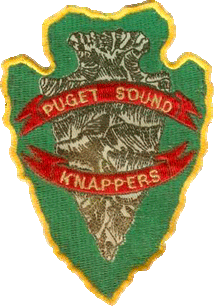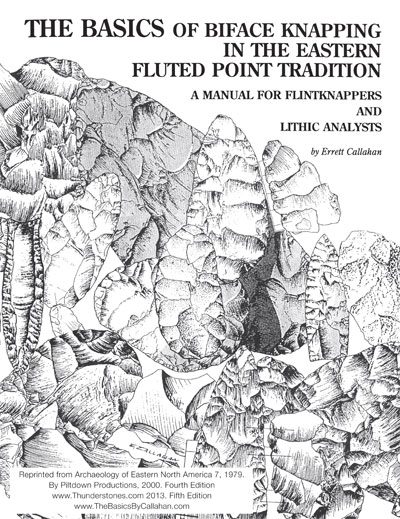 |
| Ray Harwood, Big Foot, Blog-zine. |
" Oh yes. I'll never ever forget that. It was a sunshiny day, a beautiful Oct. 20 sunshiny day, 1967. It was just nice and warm. The moment I saw her I just said, "Oh my god, they really do exist." To see is to believe with me. ... "Bob Gimlin
Most people that have not spend a lot of time in the deep forests probably are more inclined not to believe in Bigfoot. I have interviewed lumbermen from Willow Creek, up into Canada and Alaska, trappers and hunters. I have, as expected, gotten the full gamut of responses on the topic of Bigfoot. I find no value in entertaining the opinions of armchair researchers or critics. The eyewitness testimonials I have collected all feel quite believable and from credible sources. My own feeling on the subject is that it is a subspecies of human, nothing from the fail record. My opinion is just that. I feel this allusive hominid does makes and use tools, from stone, wood, glass and so on. I am convinced that Bigfoot stone artifacts in particular span thousands of years in the archaeological record. Most people that I have asked about foot whom do not believe those whom do not think outside the fake news box. Big foot is largely a Native American thing, bigots against native peoples laugh off anything Indians hold dear. These are usually democrats that are after the Indian vote and other than that like to keep them tucked away.
The truth is, is that Big Foot does make and use stone tools. Isolated artifacts are found through out the big foot habitats that have no correlation with native American archaeology sites. These "Squatcha-facts " are sharp stones that are found a good distance from the stones' place of origin. Often ignored by modern big foot hunters and researchers, these are important clues, their material culture as it were. Other squatcha-facts are made of wood or discarded human refuse such as glass or metal.
I know that big foot has been "flintknapping" for thousands of years and their ancient artifacts still adorn the forest ground, except for those that were mistaken for human artifacts and stolen by artifact hunters. Many of these stone tools made by big foot are freshly made and used. Some in context with butcher sites and some in context with big foot prints, bedding areas and scat. Often big foot make tree art, tree signs and markers, may times the individuals will use their brute strange to manipulate or modify these branches or tree, but just as often they with use stone axes and stone saws they have crafted from flint or flint like rocks. Often times these stone tools are left in the area, but uneducated big foot researchers walk right by them, here missing amazingly imp[important information. Stone tools can provide a mirriod of information including fingerprint, DNA and Biological Trace Element Research provides a much-needed central forum for the emergent, interdisciplinary field of research on the biological, environmental, and biomedical roles of trace elements. Rather than confine itself to biochemistry, the journal emphasizes the integrative aspects of trace metal research in all appropriate fields, publishing human and animal nutritional studies devoted to the fundamental chemistry and biochemistry at issue as well as to the elucidation of the relevant aspects of preventive medicine, epidemiology, clinical chemistry, agriculture, endocrinology, animal science, pharmacology, microbiology, toxicology, virology, marine biology, sensory physiology, developmental biology, and related fields
According to Wikapedia North American folklore, Bigfoot or Sasquatch are said to be hairy, upright-walking, ape-like creatures that dwell in the wilderness and leave footprints. They are strongly associated with the Pacific Northwest (particularly Oregon, Washington and British Columbia), and individuals claim to see the creatures across North America. Over the years, these creatures have inspired numerous commercial ventures and hoaxes.[1] The plural nouns 'Bigfoots' and 'Bigfeet' are both acceptable.[2]
Folklorists trace the figure of Bigfoot to a combination of factors and sources, including folklore surrounding the European wild man figure, folk belief among Native Americans and loggers, and a cultural increase in environmental concerns.[3]
A majority of mainstream scientists have historically discounted the existence of Bigfoot, considering it to be a combination of folklore, misidentification, and hoax, rather than living animals.[4][5] A minority, such as anthropologists Grover Krantz and Jeffrey Meldrum, have expressed belief in the creatures' existence.
I was trained in lithics , I have a degree in Anthropology from CSUN. Ray Harwood has always been a flintknapper, at least as far as he remembers anyway. Ray's father dabbled with obsidian on occasion and when his brother Ted saw the Crabtree film in college and came home with new enthusiasm, the race was on. Ray began experimenting with additional methods as he was addicted.
Clay was active in southern California especially along the coast for some 40 years. Trained under Francois Bordes in France in Lithic technology. MA at UCLA, trained Ray Harwood in Archaeology and lithics..
On a trip to northern California the family procured a small load of small obsidian boulders. Ray proceeded to reduce one core but somehow managed to cut off one of his toes . With no medical insurance in the family, Ray's dad sewed the toe back on, it survived but never moved after that.
Ray made extra money selling modern arrowheads and doing minor artifact restoration and replication all through school, having classified adds in many magazines. He attended CSUN where he studied under Clay Singer in the Lithics lab at the Northridge Archaeological Research Center.
In 1983 Ray wrote "How to Make Bottle Glass Arrowheads" started the flintknapping newsletter; Flintknapping Digest.
Later that year Ray founded the California Flintknapping Rendezvous and the following year started the Wrightwood Knap In with his long time friend, Dr. Alton Safford. The Wrightwood Knap In Video was the first or one of the first videos ever sold.
Since the early 1980s Ray has written the self published book," The History Of Modern Flintknapping" and had dozens of articles published concerning lithics and/or flintknapping. He also helped knapper Gary Pickett with starting the world's longest running monthly knap-in, "The Bakersfield Knap-in" , where he just returned from the 15 year celebration*. He also has several knapper blog sites including a fairly popular one at: http://flintknappingmagazine.blogspot.com/
Now a member of the PSK Ray has just returned from a visit with Emory Coons in Burns Oregon and the Kettle Falls, Columbia River Knap-in in Eastern Washington. This knap-in hosted by Patrick Farneman ( guitar-singer, host of event, wilderness skills, PSK) patrickf@bridgestothepast.org and Kyle Chambers ( Kettle Falls Museum - knapper, woodsman at practicalnaturist@gmail.com). At the knap-in he met PSK webmaster Jim Keffer and he states he was truly inspired to rededicate himself to a higher level of flintknapping and to be an active PSK member. Now in Post Falls, Idaho and has been working with Jim Keffer to possibly establish a knap-in the Spokane River area and is working on a new mail order knapping business. He looks forward to meeting and working with PSK members .
Ray at his first PSK Knap-in!
I emailed Dr . Jeff Meldrum quite a while ago on this, I have a theory that big foot, like primitive man, and some apes, make and use tools. At the time I emailed him, I had not gathered any thing in context with big foot tracks, except ground stone tools.
My theory is that some of the flint, chert, basalt, quartzite., quartz, ..flake-able stone artifacts that are found as isolates, in that they are not in context with Indian archaeological site, some are absent of age wear or patina. In short I have found flaking stone tools no where near the source of raw lithic material, so modern knappers would not have chipped them. Some stones in road beds chip from jeeps and what not, but I have found these chipped stones away from road and trails. Some of these isolate chipped stones have signs of age and some are freshly chipped or knapped. The ones I have seen where not elaborate stone tools, but quite functional in modified blade edge. You can Google my name, Ray Harwood, flintknapper and you will see I know lithics and anything flintknapping. I worked on the "Calico Early Man Site" my theory then, 1977, was that squatch may have procured flint there thousands of years ago, before it was the Mojave Desert, the flake scares only mildly resemble human work, which has a very specific anatomy. I have had rocks thrown at me in the woods like on the TV shows, I think that is one method to get a cobble to start the decordication flakes, or first flake to start the core or core tool. Furthermore, if you have been to a knap in or watched a knapper on youtube, when he or she works flint with a antler or hardwood billet, it sounds just like the "tree knock" on your TV show. I have a lot more if you are interested.
Thanks for reaching out. My concern about this hypothesis is that there are no reported sightings of sasquatches making tools. There are precious few that have them carrying anything in their hands, even. This is also my concern about the idea of them making tree structures and whatever else. Until there are a couple reliable one-to-one connections between sasquatches and these activities, all we can say about them for now is that it is an interesting hypothesis. Even good footprints would make this connection, I would think...
I think it's great that you're going down this road of inquiry. Seems like you're qualified for it as well. Good luck, and if I can be of any help, just let me know!
Best,
Cliff
Thanks for writing Cliff, I have found several 1970- films that have eye witness interviews with the following:
1. Vancouver Island Sasquatch on the beech smashing open shellfish with a hammer stone.
2. Several mentions from witnesses that Sasquatch was "clanking rock together" not eye witness but ear witness. And about a dozen references to rock throwing.
3. One video of a butcher site with tracks and stone tools in context modified lithic flake, very hard material. see the chart I made attached.
I know I can not say they are tool makers or even users of tools but, when researchers see the tracks, beds, skat, and especially a passable butchering site, it would be one more study item to come into play, more more passable piece of evidence.
Thanks Cliff
www.CliffBarackman.com
Meldrum received his B.S. in zoology specializing in vertebrate locomotion at Brigham Young University (BYU) in 1982, his M.S. at BYU in 1984 and a Ph.D. in anatomical sciences, with an emphasis in biological anthropology, from Stony Brook University in 1989 (then referred to as State University of New York at Stony Brook). He held the position of postdoctoral visiting assistant professor at Duke University Medical Center from 1989 to 1991. Meldrum worked at Northwestern University's Department of Cell, Molecular and Structural Biology for a short while in 1993 before joining the faculty of Idaho State University where he currently teaches.
Meldrum has published numerous academic papers ranging from vertebrate evolutionary morphology, the emergence of bipedal locomotion in modern humans and Sasquatch (Bigfoot) and is a co-editor of a series of books on paleontology. Meldrum also coedited From Biped to Strider: The Emergence of Modern Human Walking with Charles E. Hilton. He edited the textbook From Biped to Strider (Springer, 2004)
Meldrum has attracted media attention due to his interest in Bigfoot.[1][2][3][4] Skeptic Brian Dunning writes that "The work of responsible scientists like Dr. Meldrum is exactly what true skeptics should be asking the Bigfoot community for, not criticizing him for it."[5]
Meldrum was present at a 2011 conference in Siberia to discuss the Russian wildman.[clarification needed] He acknowledged that the results of the Russian field trip to the cave site were most likely fraudulent. He suggested that the supposed evidence found was simply an attempt by local government officials to drum up publicity.[6]
Dr. Jeff , I think I frustrated you when I wrote you regarding sasquatch and stone toll use. I have heard you on at least two occasions stating the species is not a tools user. I don’t doubt your statements or even question them. I think it need to be clear a tools user is, or how it is defined. If an individual picks up an un modified rock and uses it as a projectile or hammer stone is that a form of tool use? Does the individual have to create a functional edge or modify the stone for grip?
And in the realm I am looking into, if there are isolated modified or used lithic material , either old or freshly made, away from the source area of quarry, I simply think it is worth looking into. I have not yet personally found knapped artifacts in context with Sasquatch tracks, beds or scat. I did find all three with
Battered hammer stones, and yes… mortar and pestles. I know that the jaw of the animal is more than antiquate for this function. But there are various scenarios that even humans use a crutch. I did not mean to insinuate that the Sasquatches made, or even modified, the grind stone items, I do think in this, perhaps a rare or isolated instance, they or he/she was perhaps an opportunist. The reason I speculated so much as the scat, prints and grass beds, none were human, except mine, and the tools had been used recently.
I have read articles where deer carcass were found with “stone cutting tools” but thus far the lithic material is to poor for even a powerhouse, it would have to be able to achieve a sharp cutting edge. Fine lithic material like cherts, glass and obsidian, I feel the animal, if a knapper, would shy away from as the flake scatter is very identifiable, and these animals are track aware. Also, high lithics cut an individual often, easily and deeply. Based on the strength of the primate, tougher lithics, that no one looks at are used. More common, less cuts, blends into the environment. Anyway, I have much more to tell you, and consider there may be more than one subspecies. Please see chart enclosed:
Dr. Jeff , I think I frustrated you when I wrote you regarding Sasquatch and stone toll use. I have heard you on at least two occasions stating the species is not a tools user. I don’t doubt your statements or even question them. I think it need to be clear a tools user is, or how it is defined. If an individual picks up an un modified rock and uses it as a projectile or hammer stone is that a form of tool use? Does the individual have to create afunctional edge or modify the stone for grip?
And in the realm I am looking into, if there are isolated modified or used lithic material , either old or freshly made, away from the source area of quarry, I simply think it is worth looking into. I have not yet personally found knapped artifacts in context with Sasquatch tracks, beds or scat. I did find all three with
Battered hammer stones, and yes… mortar and pestles. I know that the jaw of the animal is more than antiquate for this function. But there are various scenarios that even humans use a crutch. I did not mean to insinuate that the Sasquatches made, or even modified, the grind stone items, I do think in this, perhaps a rare or isolated instance, they or he/she was perhaps an opportunist. The reason I speculated so much as the scat, prints and grass beds, none were human, except mine, and the tools had been used recently.
I have read articles where deer carcass were found with “stone cutting tools” but thus far the lithic material is to poor for even a powerhouse, it would have to be able to achieve a sharp cutting edge. Fine lithic material like cherts, glass and obsidian, I feel the animal, if a knapper, would shy away from as the flake scatter is very identifiable, and these animals are track aware. Also, high lithics cut an individual often, easily and deeply. Based on the strength of the primate, tougher lithics, that no one looks at are used. More common, less cuts, blends into the environment. Anyway, I have much more to tell you, and consider there may be more than one subspecies. Please see chart enclosed:
The lithic grade scale was invented by Callahan for several reasons, mostly, I feel, to create a desirable point of reference for lithic quality and workability. The chart is based on a numerical system which starts with opal, the easiest to chip, and ends with felsite, the most difficult. Nearly every lithic analyst, flintknapper and archaeologist uses this as a standard reference in reports, papers, and articles. These new techniques for the study of stone tools, are now a standard and experimental archaeology. The concepts, "the lithic grade scale, and biface staging, are widely used in flintknapping circles to the point the most new knappers didn't even know these concepts were fairly new and again discovered largely by Callahan.
VIDEO SENT TO CLIFF
https://youtu.be/p3ExvAs2Tyk
Well, at least that's something. Nothing that positively correlates it to a Bigfoot, but it does raise the possibility in a reasonable way. Thanks for sharing that with me. It gives me something to think about.
Best,
















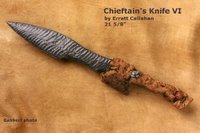
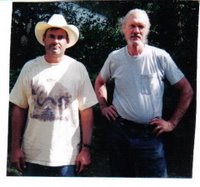

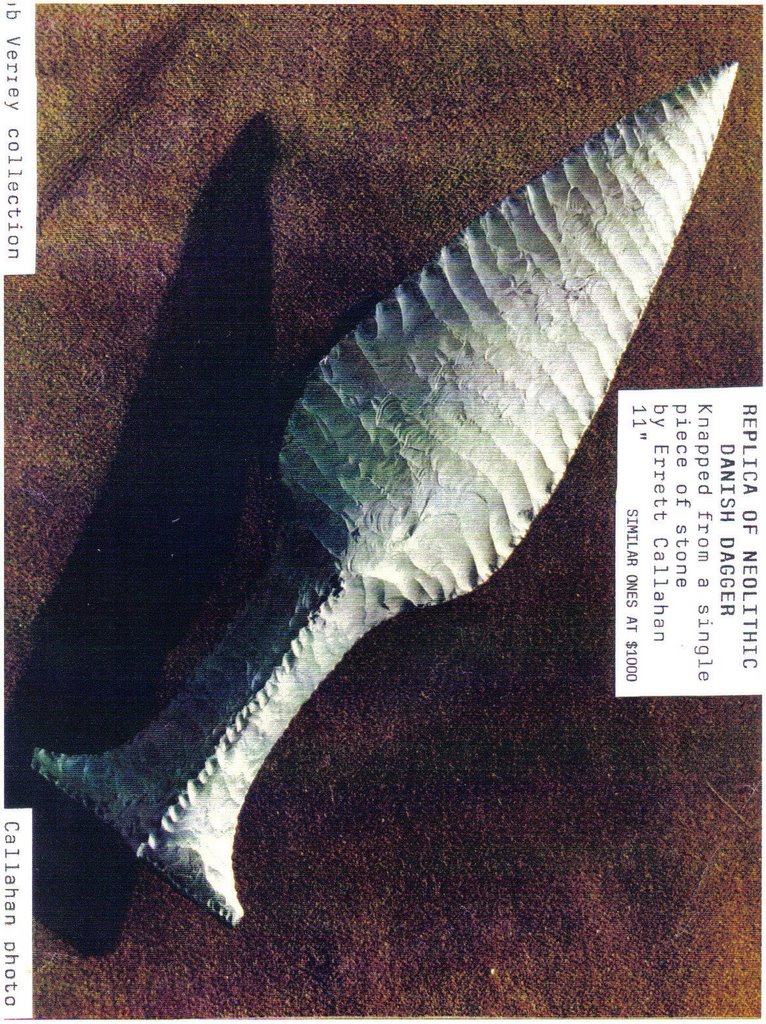


 D
D

 and I'll see that they get added!
and I'll see that they get added!